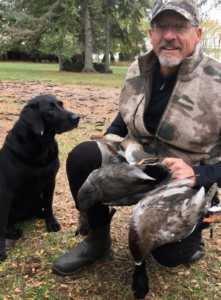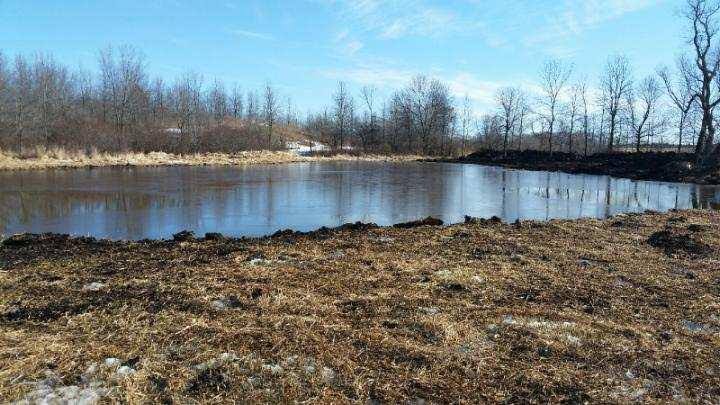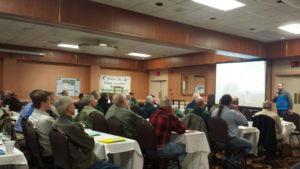 An April 2019 WWA newsletter article by Bruce Ross, Executive Director
An April 2019 WWA newsletter article by Bruce Ross, Executive Director
Feels like spring is finally on the ground, at least here in SE Wisconsin. I was reminded of that with some pictures sent to me by lead AWA & Waukesha Chapter Chairman volunteer, Mike Alaimo, showing the migration is happening (even if I still have a little ice in my river-flooded backyard!). Here’s a raft of Cans, (and two ringneck, lest I get a raft of emails pointing out my omission!), resting in SE Wisconsin on their way north. Check out the drake in mid-dive to the left:
Two weeks ago, it was impossible to believe that Spring was around the corner, when I was driving through 8 inches of new snow as President Bruce Urben and I returned from the Waterfowl Hunters’ Conference in Wisconsin Rapids!
The conference is an annual opportunity to gain insights from researchers and biologists associated with Wisconsin Waterfowl – and with less than 2 months under my belt as Executive Director, it was a great opportunity to benefit from the perspective of the nearly 120 attendees from around the state. Let me share some factoids from that conference:
-
There are about 200,000 mallards in Wisconsin currently.
- Between 70 – 80% of Wisconsin-harvested mallards and wood ducks are born in WI.
- Given the historical 60% survival rates of these birds through a given season, there must be a 40% “recruitment rate” (the rate of brood success into adulthood) to maintain this population.
- So, recruitment rate becomes critical. As a state, we must provide the right conditions to achieve this recruitment rate – meaning, we must have the right amounts of wetland habitat in the right locations for breeding success.
- Small wetlands are, acre for acre, more productive than large wetlands. These small wetlands, and associated grassy cover, facilitate pairing. And since they warm faster in the spring, tend to produce invertebrates sooner that are important to young waterfowl.
- 75% of wetlands are on private land; and, importantly, 85% of restorable wetlands are on private lands.
Add these facts up, and you can understand WWA’s value proposition: Since we use your restoration monies exclusively in Wisconsin, on generally smaller properties, and we do not discriminate against doing work on private lands, our role is critical in addressing the recruitment rate of the birds WI Waterfowlers harvest most.

In March, water and geese quickly returned to this Manitowoc County project WWA completed in February, 2017.
The bad news is that we are only scratching the surface. Wetlands are under continuous threat, and our ability to restore them to full productivity is limited. To be more impactful, we must grow our investment in these wetlands—through grants and fundraising, which support our volunteer and professional on-the-marsh efforts. Finding those new resources and being able to use them efficiently—and accomplish more even without additional resources—has to be a top priority for our organization.
That’s why I’m so impressed with WWA’s volunteer Board of Directors that recently directed me to propose alternative structures to accomplish our goals more effectively. While that is a work in current progress, it reflects a re-commitment to having the greatest possible impact we can have for Wisconsin Waterfowlers. And it will open new doors for members who want to play a role in this initiative to grow our impact across the state. I’m pretty excited!
As always, if you have ideas or thoughts that you want to share with me, call me at 262-224-4949, or email me at bruceross@wi.rr.com.


